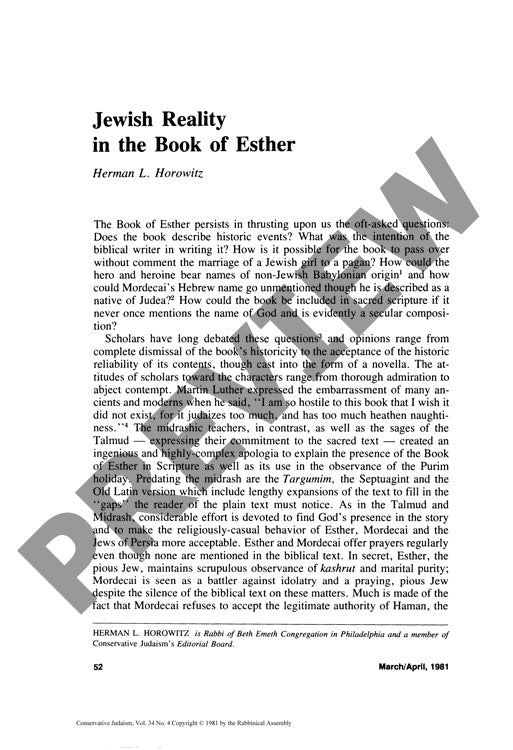Jewish Reality in the Book of Esther
Couldn't load pickup availability
The Book of Esther presents a paradox: a biblical text devoid of divine references that nonetheless became central to Jewish religious tradition. Behind its secular veneer lies a complex portrait of Jewish assimilation in Persian diaspora, where characters like Esther and Mordecai initially embrace Persian culture and customs at the expense of their religious identity. Through textual analysis and examination of midrashic interpretations, this research reveals how the Hebrew narrative depicts a Jewish community deeply enmeshed in Persian society, with protagonists who adopted pagan names and abandoned distinctly Jewish practices in pursuit of personal advancement. The threat of genocide ultimately forces both characters to confront an uncomfortable truth: their individual fates remain inexorably bound to their people's collective survival. Close reading of the biblical text alongside analysis of later Jewish commentaries demonstrates how religious scholars reconciled the book's secular elements with religious tradition. The narrative ultimately functions as a cautionary tale against seeking security through assimilation, arguing that Jewish survival reflects divine intention and represents an inescapable duty. This understanding illuminates both the text's inclusion in the biblical canon despite its ostensibly secular character and the distinctive liturgical features that separate Purim from Hanukkah observances.

More Information
-
Physical Description
-
Publication Information
Published 1981
ISBN
-
Publication Credits
Herman Horowitz

